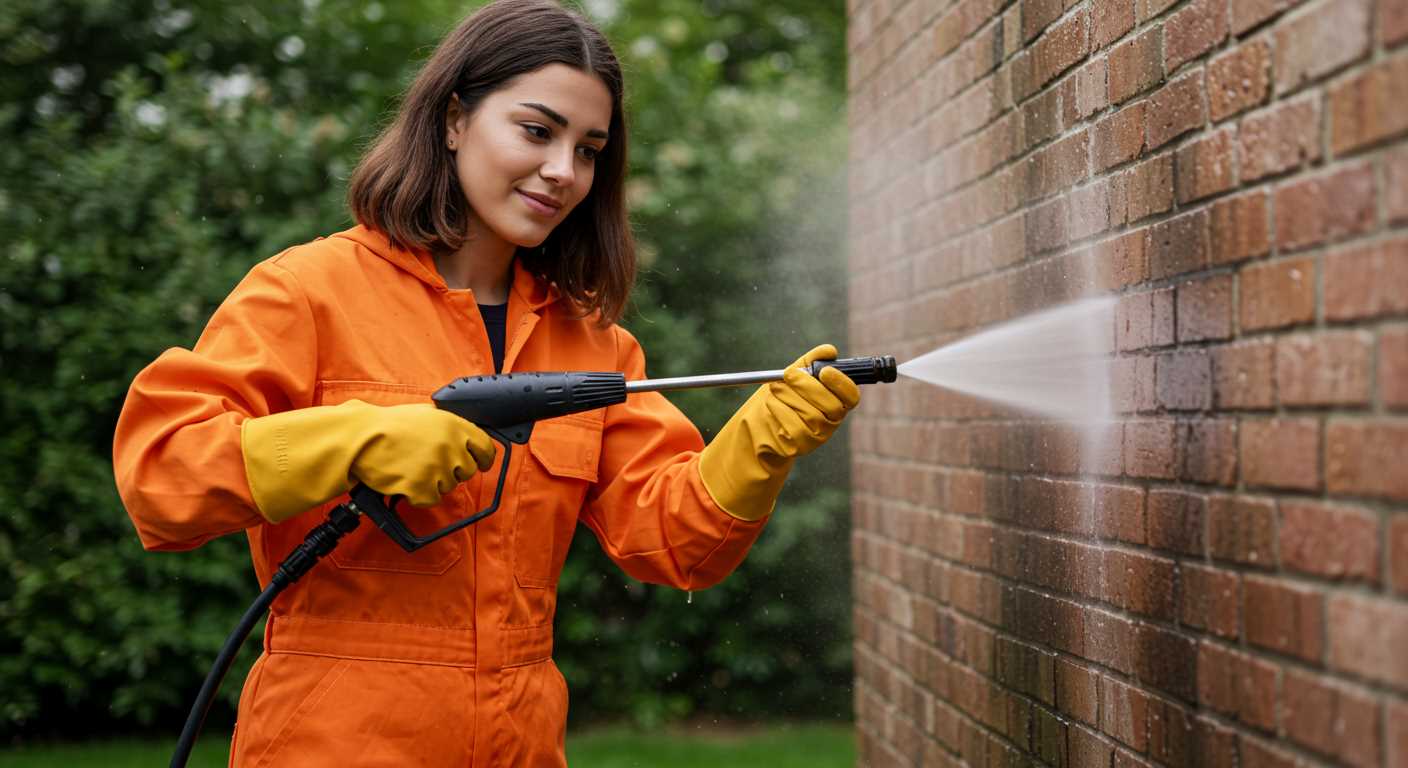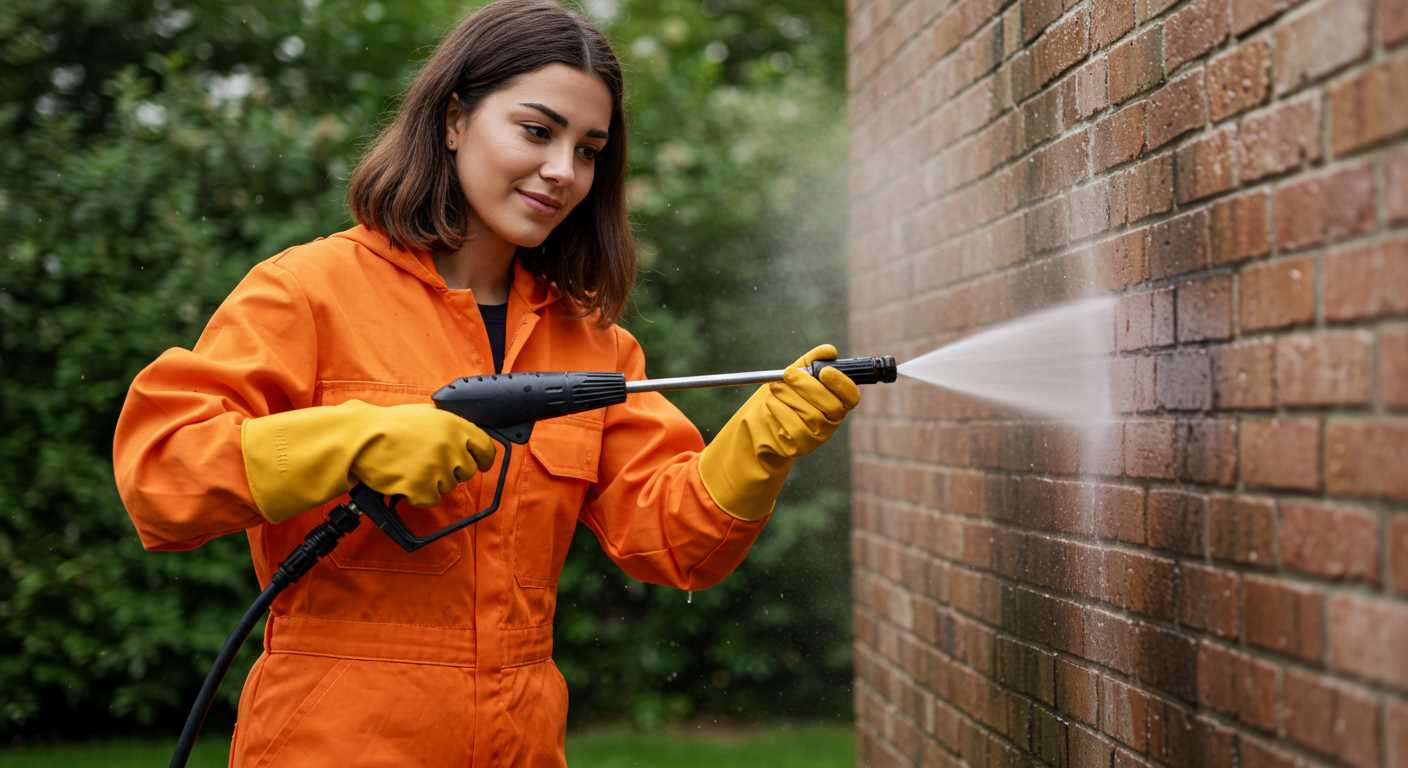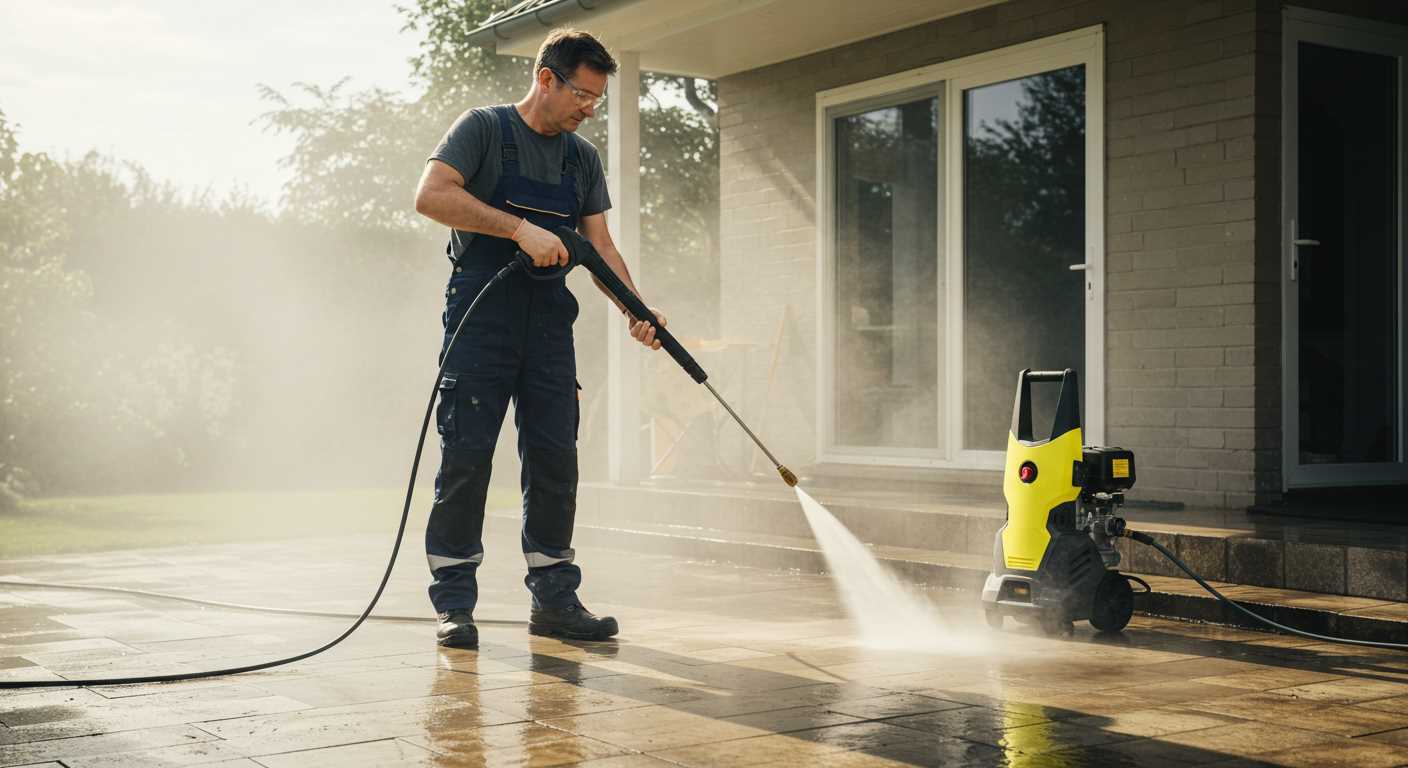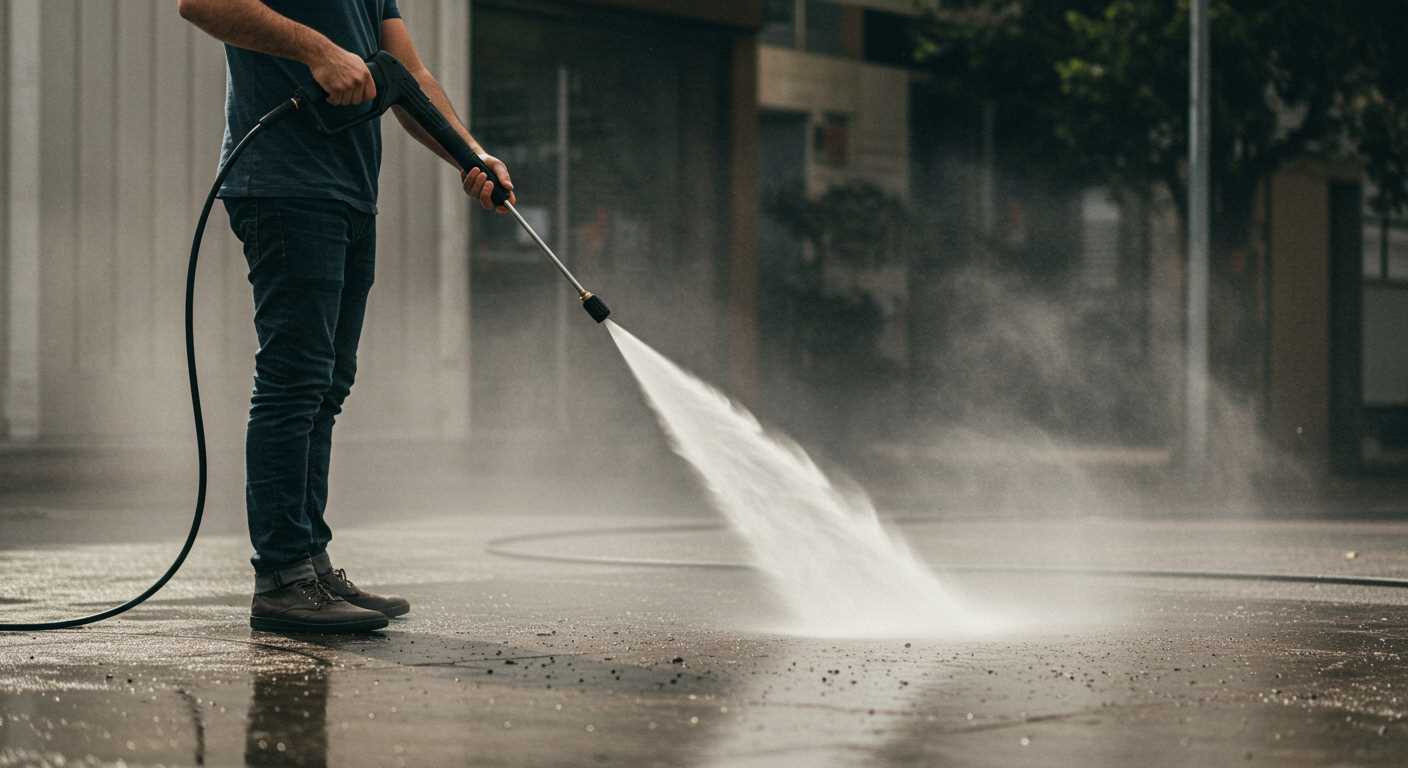


Using heated liquid in your cleaning unit can significantly enhance its performance, but there are crucial factors to consider before doing so. Most manufacturers recommend using liquids at a maximum temperature of 60°C (140°F). Exceeding this limit can lead to potential damage to the internal components, such as seals and hoses, which may not withstand extreme heat.
From my experience, many models are designed specifically to handle elevated temperatures, particularly those tailored for industrial applications. However, residential units often lack the necessary build quality to accommodate heated liquids. Always check the specifications in the user manual or consult with the manufacturer to ensure compatibility.
In my years of testing various models, I encountered numerous scenarios where operators mistakenly assumed that hotter meant better. One instance involved a unit that began leaking after being exposed to liquid above the recommended temperature. This resulted in costly repairs and downtime. Hence, it’s critical to adhere to the guidelines provided by the manufacturer.
For optimal results, if your equipment permits it, pre-heating the liquid to a moderate temperature can assist in breaking down stubborn grime more effectively without risking damage. Just ensure that you are well-informed about your specific model’s limitations. This approach can transform your cleaning tasks, making them quicker and more effective.
Compatibility of High-Temperature Liquids with Cleaning Equipment
Using elevated temperatures in cleaning machines can yield impressive results, but not all models are designed for it. From my experience, many consumer-grade appliances should not be subjected to high-heat substances. This can lead to significant damage or even complete failure. It’s crucial to consult the manufacturer’s guidelines before making any decisions.
In professional-grade units, there are variations. Some are engineered to handle elevated temperatures, often labelled explicitly for such use. These machines usually feature enhanced components, such as heat-resistant seals and specialised pumps. Always verify if your unit supports this feature, as using inappropriate temperatures can void warranties.
During my tenure in the cleaning equipment industry, I’ve encountered numerous instances where users attempted to utilise boiling liquids, thinking it would enhance their cleaning process. The results were often disastrous; seals melted, and pumps were damaged. The costs for repairs or replacements can quickly accumulate. Always err on the side of caution.
Here’s a quick reference table for determining the suitability of your cleaning machinery for high-temperature applications:
| Machine Type | Temperature Capacity | Recommendations |
|---|---|---|
| Consumer-Grade | Up to 50°C | Avoid using heated liquids |
| Professional-Grade | Up to 100°C | Check specifications; use as indicated |
| Industrial Models | Over 100°C | Designed for high-temperature cleaning |
In summary, while using elevated temperatures can enhance cleaning efficacy, it’s paramount to ensure your machine is compatible. Ignoring this could lead to costly repairs and frustration. Take the time to read the manual; it can save you a lot of hassle in the long run.
Understanding Pressure Washer Temperature Limits
Many users overlook the significance of temperature thresholds when operating these powerful machines. From my experience, adhering to manufacturer specifications is non-negotiable. Most models are designed to handle temperatures up to 60°C (140°F). Exceeding this limit can lead to damage, particularly to seals and hoses, which are not built for extreme heat. I remember a colleague who pushed his unit beyond the recommended range, resulting in a costly repair that could have been avoided.
It’s also crucial to consider the cleaning agent used. Some chemicals react adversely to elevated temperatures, creating a risky situation. During a demonstration, I witnessed a client using a strong detergent at high temperatures, leading to a dangerous situation where the mixture created toxic fumes. Always check compatibility with the detergent manufacturer before mixing anything with your liquid supply.
Another aspect often disregarded is the impact on performance. While warmth can enhance cleaning efficiency, excessive heat may cause the machine to overheat, risking a shutdown or, worse, permanent damage. I recall a job where the operator had to pause frequently to let the machine cool down, which significantly delayed the project. This inefficiency can be a major setback, especially in commercial settings where time means money.
In conclusion, respecting temperature limits is paramount. Always refer to the user manual for specific guidelines and ensure that your equipment remains in optimal condition for years to come. Regular maintenance checks can also help spot potential issues before they escalate into costly repairs.
Types of Pressure Washers Compatible with Hot Water
For those considering high-temperature applications, specific models excel in handling elevated temperatures. Electric and gas-powered variants differ significantly in their capabilities. Electric units generally have limitations, often maxing out at about 60°C. On the other hand, gas-powered systems can typically manage temperatures up to 100°C, making them a superior choice for heavy-duty tasks.
Electric Pressure Washers
When selecting an electric model, look for those explicitly designed for higher temperatures. Some brands offer units rated for warm applications, but always check the specifications. Remember, using temperatures beyond a machine’s limit can cause premature wear or even permanent damage.
Gas-Powered Pressure Washers
Gas models often come with built-in heating elements, allowing for better temperature control. They’re ideal for commercial settings where grease and oil removal is paramount. Investing in a quality gas model can save time and significantly enhance cleaning efficiency. Additionally, consider pairing your machine with a hose reel for pressure washer to streamline your workflow.
Risks of Using Hot Water in Non-Compatible Models
Using elevated temperatures in incompatible models can lead to significant issues. Here are the main risks I’ve encountered during my years in the industry.
Potential Damage to Internal Components
Many machines are built to handle a specific range of temperatures. Subjecting them to higher levels can result in:
- Seal Failure: Rubber seals and gaskets can deteriorate, leading to leaks.
- Corrosion: Some metals are prone to rusting when exposed to excessive heat, compromising the unit’s integrity.
- Overheating: Motors may overheat, causing premature failure and costly repairs.
Safety Hazards
Using inappropriate temperatures not only risks the equipment but also raises safety concerns:
- Burns: Hot liquid can cause serious burns if there’s a malfunction.
- Pressure Build-Up: Incompatible models may not handle the increased pressure from hot fluids, leading to dangerous bursts.
- Electrical Risks: Moisture combined with heat can create short circuits, posing a fire hazard.
Always check the manufacturer’s specifications and guidelines before using any cleaning device. It’s a small step that can prevent significant problems down the line.
Recommended Temperature Settings for Hot Water Use
For optimal performance, maintain the temperature between 60°C and 80°C. This range effectively removes grease and grime without compromising the integrity of your equipment. In my experience, using anything above 80°C can lead to component wear and tear, particularly in models not designed for extreme temperatures.
Adjusting Settings for Different Tasks
When tackling tough stains, such as those from oil or grease, consider setting the temperature at the higher end of the range. However, for general cleaning tasks, a temperature around 65°C provides a balance between efficiency and safety for the machine. I’ve found that these settings not only enhance cleaning power but also prolong the life of the unit.
Monitoring Water Quality
Ensure the quality of the liquid is suitable for high-temperature use. Impurities can cause scaling and damage to internal components. Regular maintenance, including descaling when necessary, is crucial to keep your equipment running smoothly. In my years of experience, I’ve seen a direct correlation between monitoring water quality and the longevity of the machine’s lifespan.
How Hot Water Affects Cleaning Performance
Using elevated temperatures can significantly enhance the efficiency of your cleaning tasks. In my experience, the effectiveness of grime and grease removal increases with temperature, allowing for quicker and more thorough results.
- Chemical Reaction: Heat accelerates the action of cleaning agents, helping to break down tough stains and contaminants. For instance, oil-based residues dissolve more readily at higher temperatures, which means less scrubbing and more time saved.
- Surface Penetration: Warm fluids can penetrate porous surfaces better than cooler ones. This is particularly evident on concrete or brick, where heated solutions reach deeper into the material, lifting embedded dirt and stains.
- Faster Drying Times: Elevated temperatures often lead to quicker evaporation of the solution used, which can be beneficial when time is a factor. Surfaces are ready for use sooner, which is particularly advantageous in commercial settings.
- Microbial Elimination: Increased temperatures can kill bacteria, mould, and mildew effectively. This is crucial for sanitising areas where hygiene is paramount, such as kitchens and medical facilities.
However, it’s crucial to monitor the specific temperature limits of your equipment. Exceeding these can lead to equipment damage or void warranties. Always align the temperature with the manufacturer’s guidelines to ensure optimal performance without risking your investment.
In practical terms, I’ve found that setting the temperature around 60-70°C often yields the best results without compromising the integrity of the machinery. This range strikes a balance between cleaning power and safety for the equipment.
Maintenance Considerations for Hot Water Use
Regular upkeep of your equipment is crucial when employing elevated temperatures. Ensure that seals, gaskets, and O-rings are made of materials that withstand heat, such as Viton or EPDM. Rubber components can degrade quickly when exposed to high temperatures, leading to leaks and decreased performance.
Fluid and Filter Checks
Monitor the condition of your fluid regularly. Using fluids specifically designed for higher temperatures will help maintain pump efficiency. It’s also wise to inspect and clean filters frequently, as particles can accumulate more rapidly when heated liquids are involved. Clogged filters can reduce flow and pressure, counteracting the benefits of using warmer liquids.
Inspecting and Testing Components
Keep an eye on the heating elements and any associated electronics. Regular testing of these parts can prevent malfunctions. I recall a time when a client neglected this aspect; the heating unit failed during a crucial job, causing delays and frustration. A simple inspection could have avoided that scenario.
Alternatives to Hot Water for Effective Cleaning
Using heated liquids can enhance cleaning results, but there are numerous alternatives worth considering. One effective method is the application of specialized detergents that provide strong cleaning power without requiring elevated temperatures. These formulas are designed to break down grime, grease, and organic stains efficiently at lower temperatures.
Detergent Types and Their Applications
Different cleaning tasks demand various types of cleaning agents. Here’s a quick overview:
| Type of Detergent | Best For |
|---|---|
| Alkaline Cleaners | Grease and oil removal |
| Acidic Cleaners | Mineral deposits and rust |
| Surfactants | General cleaning and surface preparation |
| Enzymatic Cleaners | Organic stains and odours |
Mechanical Techniques for Enhanced Cleaning
In addition to selecting the right cleaning agent, mechanical techniques can also improve results. For example, using a rotating brush attachment can significantly lift dirt and debris from surfaces. This method works well on surfaces like driveways and patios where stubborn stains reside.
Another approach is to increase the dwell time of the cleaning solution. Applying the detergent and allowing it to sit for a few minutes can help dissolve tough stains. Remember to rinse thoroughly afterwards to avoid residue.
For more intricate cleaning tasks, such as restoring stained cutlery, you might find detailed guidance helpful. Check out this how to clean stained teaspoons a step-by-step guide for practical tips.





.jpg)


